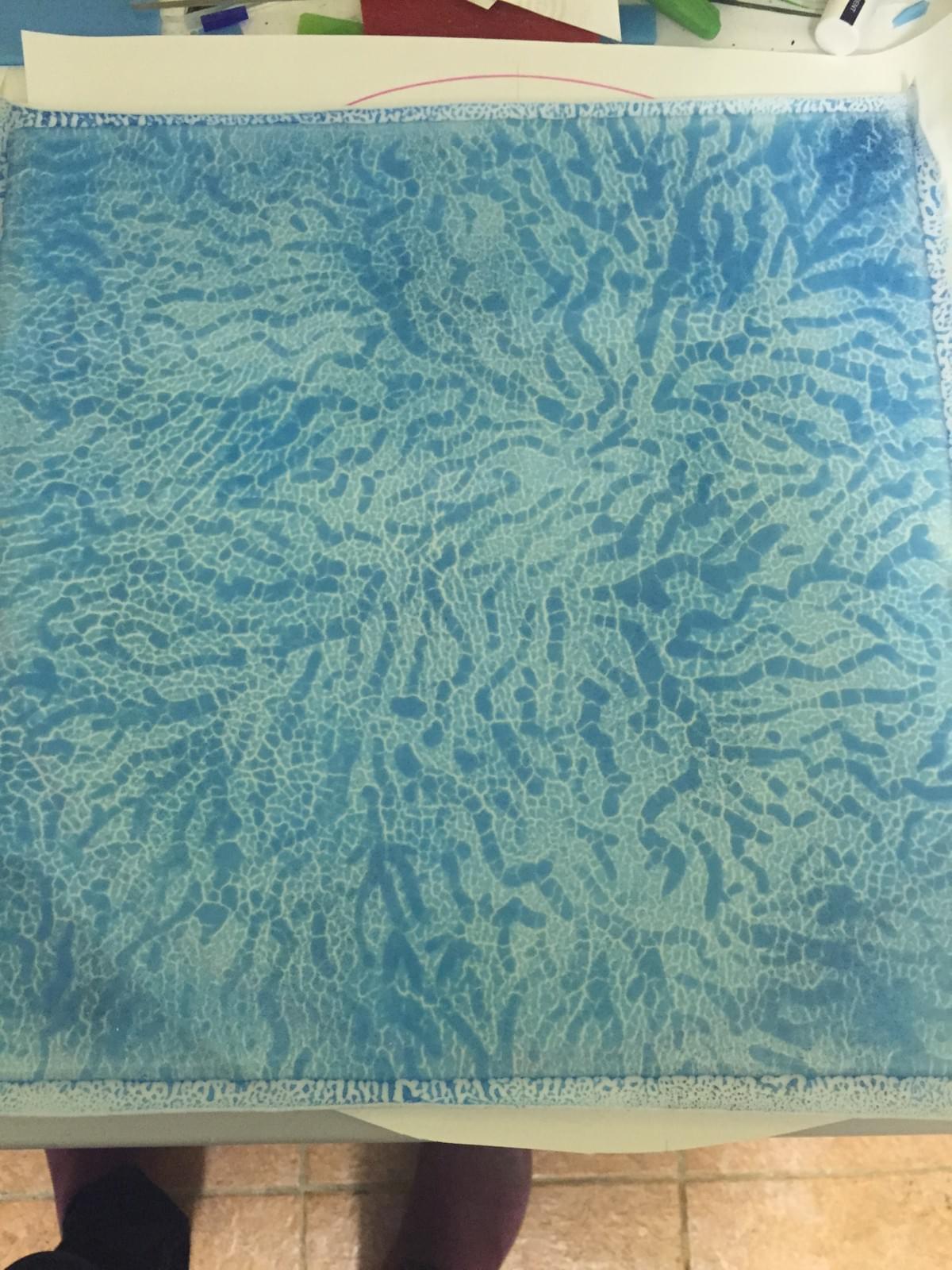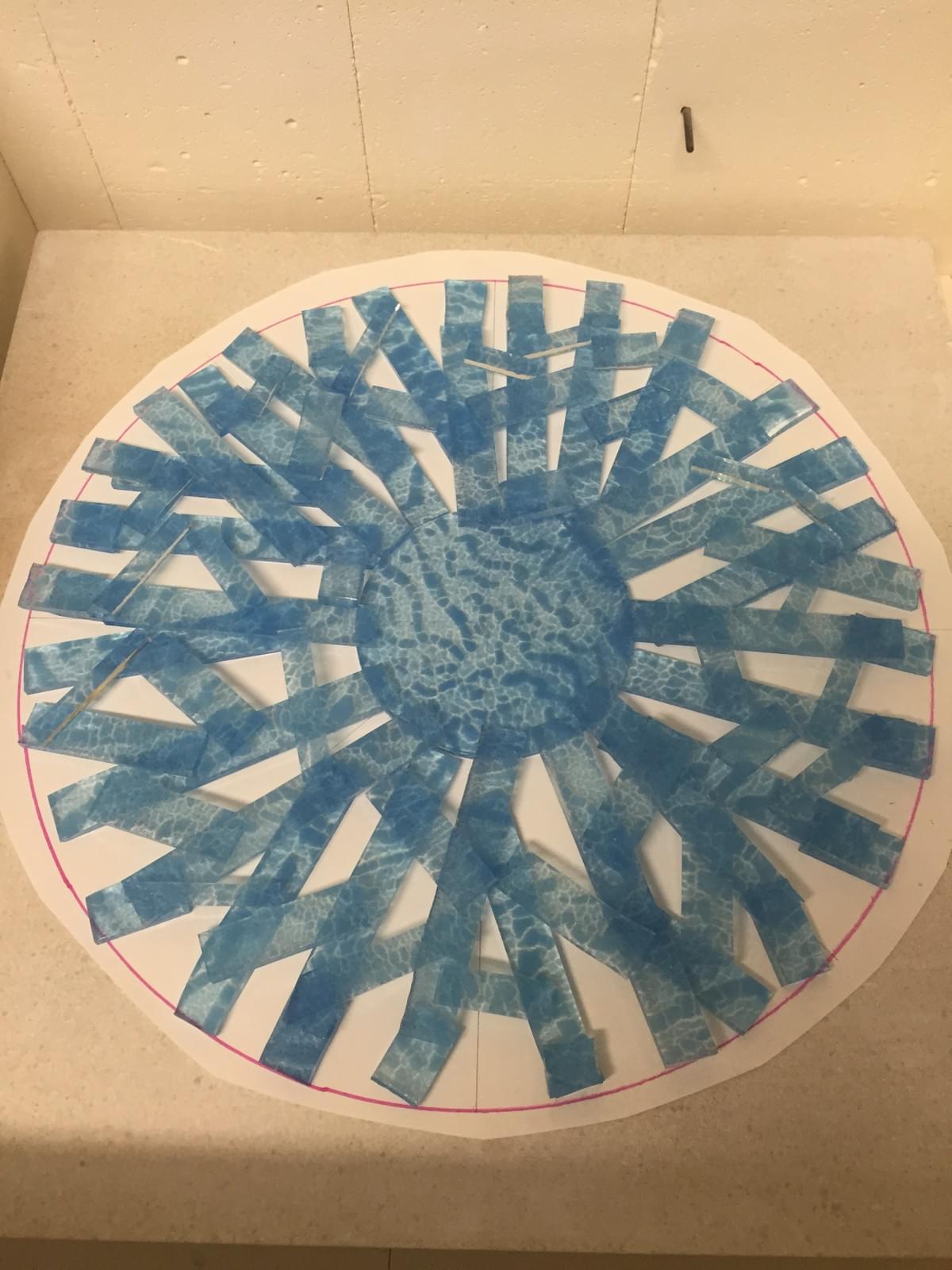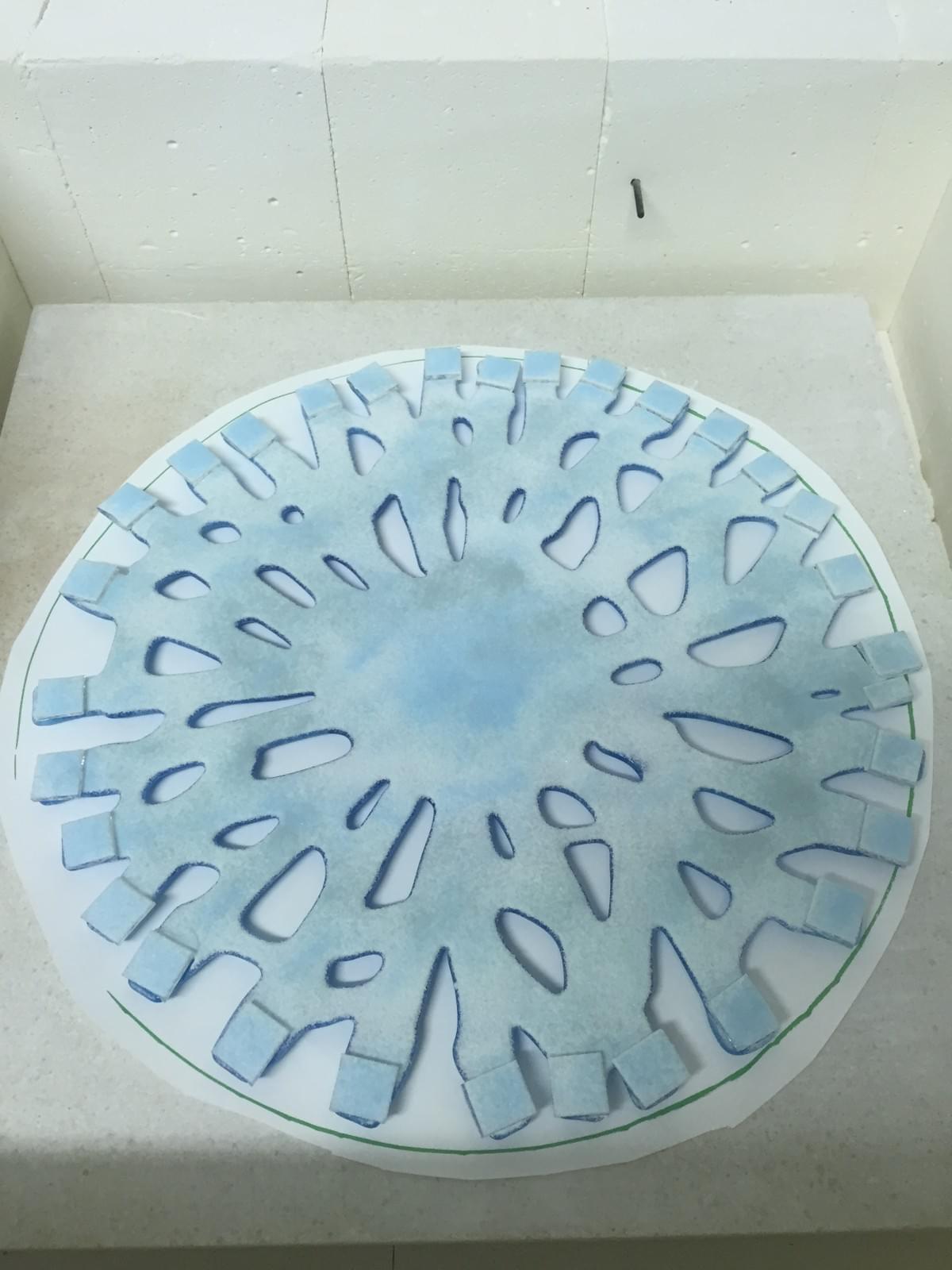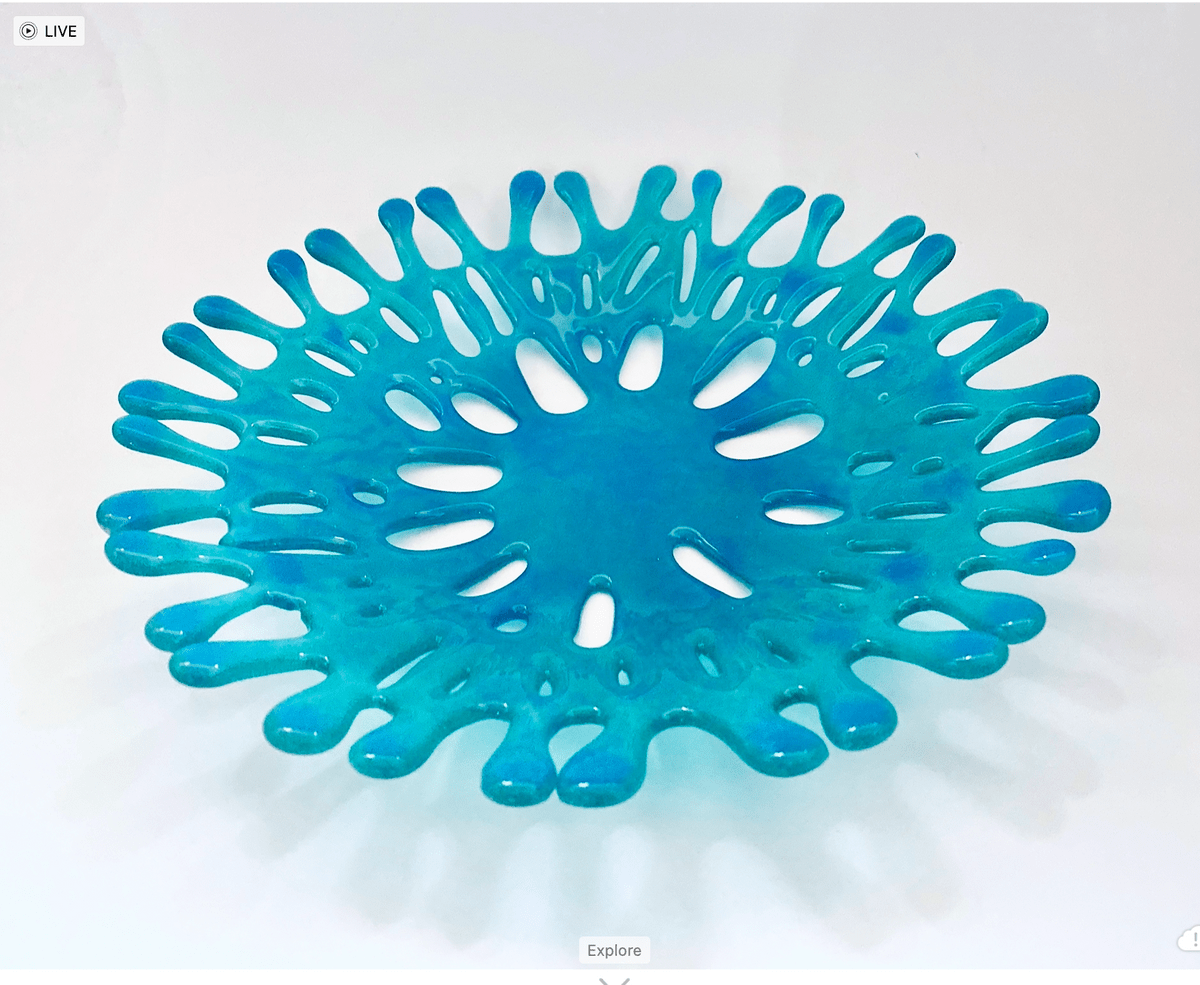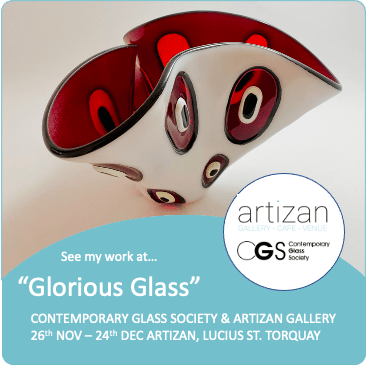
Treballant
At Work
My glass studio is based in Berkshire, UK.
I now have over ten years of experience of working with glass. My glass journey began with a Christmas present, a microwave kiln. I started making small pieces and soon realised I wanted to learn more. I enrolled on some glass courses, joined facebook groups and watched lots of videos. I was hooked. I bought my first kiln in 2014. Since then, I have had the privilege to learn from some real masters in glass, sometime travelling overseas to their studios. Now I am developing my own techniques and I have my personal style.
I am a biologist by training, so glass fusing is quite different from my day job, although I am always amazed at how useful a scientific training is when trying to work with glass. The physics of glass can be testing and many reactions occur when you combine colours. Also, some of my favourite designs have been inspired by nature.
I love making jewellery, trying to produce unique pieces that costumers can treasure. Recently, I have started working with fine silver, so I can make the silver bails for my pendants. I also love sculpting glass, building three dimensional pieces that have an organic feel. I have been building a collection of insect inspired pieces. My pieces do not necessarily aim at representing insects in detail, but they capture what for me is the essence of a particular species. Therefore, the pieces are often abstract, but an entomologist should be able to guess the name of the species or group of insects that is represented.
The pieces are made with different forms of glass (sheet, powder and frits), some are fused several times to achieve depth and texture, others use 3-D printing and casting techniques. Lately I have been making nudibranchs (sea slugs). When I used to dive in the mediterranean, I used to love finding these small and graceful creatures. The glass sea slugs require manipulation of the glass at high temperature to achieve three dimensional shapes, an exciting and rewarding technique.
I share the love of glass with other artists, some of which are now great friends. A group of us have been working together for several years, with regular weekend retreats solely dedicated to explore and experiment. I can honestly say that glass has brought much joy to my life. It is a great complement to my scientific work, it brings many opportunities to further my knowledge and it puts me in contact with some amazing people.
Some examples of glass process
Creating a coral bowl

Decorating glass with powders

First fuse

Cutting the glass

Arranging the glass for second fusing

Adding more glass for the third fusing

Final piece after the fourth fusing into a slump mould
FOTOGRAFÍA
PHOTOGRAPHY
Other interests
Alongside my glasswork I am a keen photographer. I am an entomologist by training, so I love insect macro photography. I often take the inspiration for my creations from the pictures of nature around me. This has been useful when taking pictures of my glass pieces, as this can be quite a challenge, given all the reflections. All the pictures in this website were taken by me.
You can see more of my pictures at https://www.flickr.com/photos/mongaral/
- Flickr Photo Stream
Drop me your email and I'll send you news on my latest projects
- ExhibitionsLinks to Exhibitions past and present
Contemporary Glass Society & Artizan Gallery, Torquay
The “Glorious Glass” exhibition demonstrates how utterly glorious and amazing contemporary glass is so that everyone can appreciate and enjoy its magical colours, textures, use of light and variety of techniques and also discover their own local glass artists.
26th November - 24th December, Artizan Gallery, Lucius St, Torquay
Glass Terminology
Common terms used in this website
Annealing or Annealed Glass
Annealing is the process of heating and slowly cooling glass which gives it strength and avoids cracking and stress weaknesses. I use this in jewellery for example to make it strong enough to handle everyday wearing.
Bisque Moulds
Bisque moulds are made with clay and fired at high temperature. They are used to give glass a specific shape during slumping.
Bullseye Glass
Bullseye glass is a brand of art glass made in the USA. It comes as sheets of glass or ground to different grades called "frits" or powders. It is the main material I use.
Dichroic Glass
Dichroic Glass is glass fused with layers of metal oxides. These microscopic metallic layers, typically of chromium, aluminium or magnesium, subtly change the hue and brightness of the glass, causing it to show different colours and tones depending on the angle of view.
Float Glass
Float glass is basically window glass, it is produced by solidifying molten glass on the surface of a bath of molten tin.
Frits
Frits are crushed glass that can be melted onto a glass base producing beautiful colour patterns, textures and finishes.
Powdered Glass
Power Glass is glass crushed to a powder consistency. It is very useful for building landscapes and backgrounds and providing subtle colour transitions.
Slumping
Glass Slumping is the process of using a mould in a kiln to allow the hot glass to naturally 'slump' or melt into a mould, taking on the shape and any texture that is created by the mould rather like a cake or jelly does in an oven. Slumping can be done letting glass melt 'into' a mould or by draping 'over' the outside of a convex mould.
© Fosambart 2022








